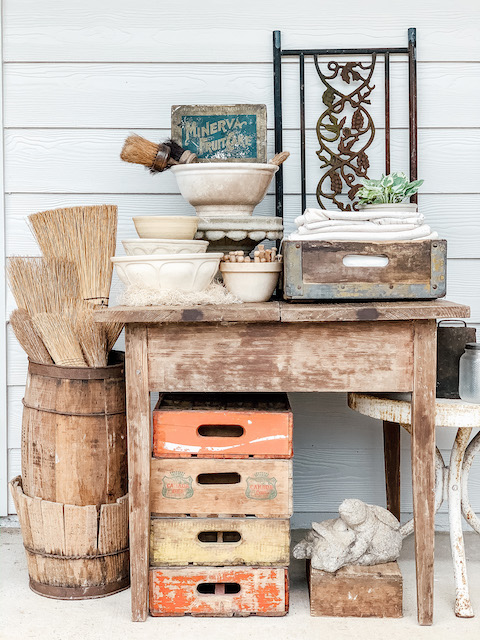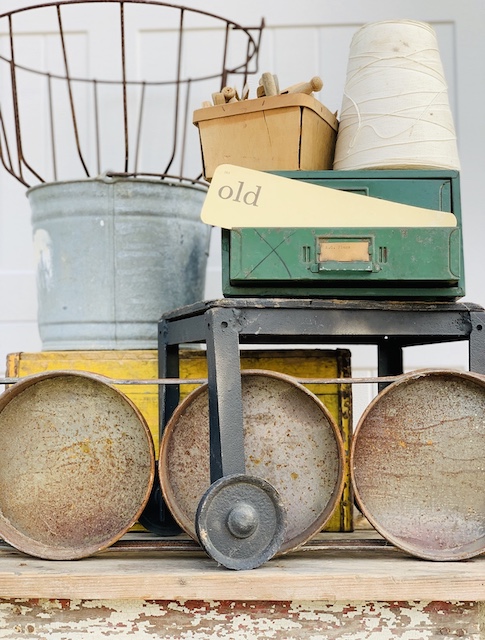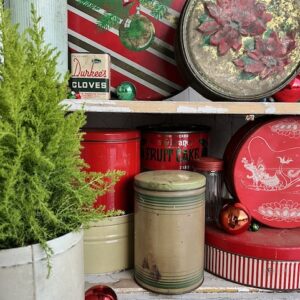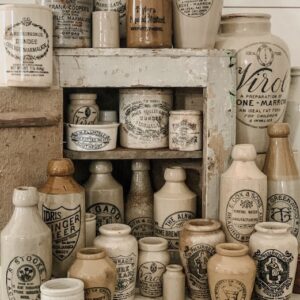Have you ever wondered how to determine if something is old? I am sharing some of my top tips on how to figure it all out!

Have you ever found a treasure that you thought could be old – but you just were not sure? Sometimes it can be hard to tell if a recent pick or a piece that has been handed down is something that is indeed old. Especially now, with so many really good reproductions out there, you have to be very careful when trying to decide! Below I am sharing a few tips that I use when I am trying to determine if something is old.

Bar Code

This may seem like a no brainer, but I feel it is important to mention. If you ever find something with a scannable commercial barcode on it then you know that item was produced after the early 1970s, and quite possibly more recently than that. These barcodes were added to products beginning in 1974. However, during the early years of using barcodes, not every product had one. So, please remember to take that fact into consideration.
Makers Mark

If you turn over a piece of china at an antique store or at a thrift shop then you very well may see a back stamp. While not every old item will have one, many will. Items that do have a makers mark are easier to research. These marks can be an emblem, a stamp, an imprinted mark, a makers name, a label, and so on. Once you can identity the mark, then you can research it and gather information that will help you determine the age of your piece.
*TIP: It is important to note that there are fake marks out there. Be ware!
Signs of Imperfections

I always like to examine a new find from all sides. I look underneath, inside, and all around each piece that I buy – before I buy it – for signs of age. For example, if I am buying a ball jar or a piece of jadeite, I will look on the bottom to see if there are signs of wear. You would imagine that an old canning jar or an old mixing bowl would have scuff marks and worn areas from years of being scooted across counters and shelves!
It makes my heart happy to see imperfections such as scratches, hairline cracks, fading, crazing, and basic wear. These are all signs that pieces have been around and USED for years.
Signs Of Being An Older Handmade Piece

This is sort of a ‘general’ tip and may even be obvious, but I want to point out that I look for clear signs of the piece being handmade. I search for things that prove the piece would have been made by an actual person rather than machine. Specifically, I am looking for things such as:
- marks from old hand tools
- hand stitching
- fasteners (nails, screws, bolts, rivets) – I love to see square head nails
- dove-tailed joinery in furniture
- saw markings
- wooden pegs
- bubbled glass
In addition to other things, these are some of the clues I look for to see if a piece is handmade and old. If you’d like, you can click here to see my most recent “favorite” piece that is full of bubbled glass and dove-tailed joints!
TIP: A person can go to their shop today and hand make a piece with older materials (such a salvaged square-head nails) so it is important to note that just because it is handmade does not necessarily make it new. You must take time to study the entire piece for signs and clues about it’s age.
Examine Any Letters And Numbers:

Letters and numbers can help you to identify the age of a piece! Even if it may not look like a properly written date, numbers and letters can help you to identify a piece! In fact, some pieces are engraved with an actual date. You just have to do a little searching! Flip your pieces over and around and search for any dates! For example, you can always look inside a book and locate a copyright date to tell when it was written. Below I will quickly share a few other letters/numbers to look for!
- If you locate a patent number then you can search for it at the US Patent and Trademark Office.
- If you have an item that has a ZIP code then you can also use that to help you date an old piece. ZIP codes started to appear in 1963 as five-digit numbers on some items and packaging along with manufacture or distributor addresses.
- Old price stamps or stickers on items such as coffee jars, tins, etc… can always be helpful. Sometimes the price is even printed on the actual label of the item.

Things To Avoid
Shiny nail heads, finishing nails, staples, and sometimes even phillips head screws are all signs that a find could be newer! One caveat to this – these things could be a sign that an old piece has been repaired. You’ll have to use your best judgement here.

Whether inherited, purchased, or found, it is always nice to have a clear understanding of the items that you have in your home. Knowing how old something is can help determine its value. While it sometimes can be hard to determine if something is old, I hope that the information above will help. In addition, my biggest hope is that you can feel a bit more confident and empowered to make good buying decisions the next time you are at a flea market or at an estate sale. And, if you ever find yourself wondering if something is indeed old, just reference this quick list! Happy hunting my friends.


 Vintage Christmas Tins: Easy Styling Tips and Tricks
Vintage Christmas Tins: Easy Styling Tips and Tricks Santa Mug Shopping
Santa Mug Shopping Spooky Vintage Halloween Shelves
Spooky Vintage Halloween Shelves Simple Everyday Items To Make Decorating Easier:
Simple Everyday Items To Make Decorating Easier:


Thanks these are fabulous tips!!
You are most wlecome. Thank YOU for being here!